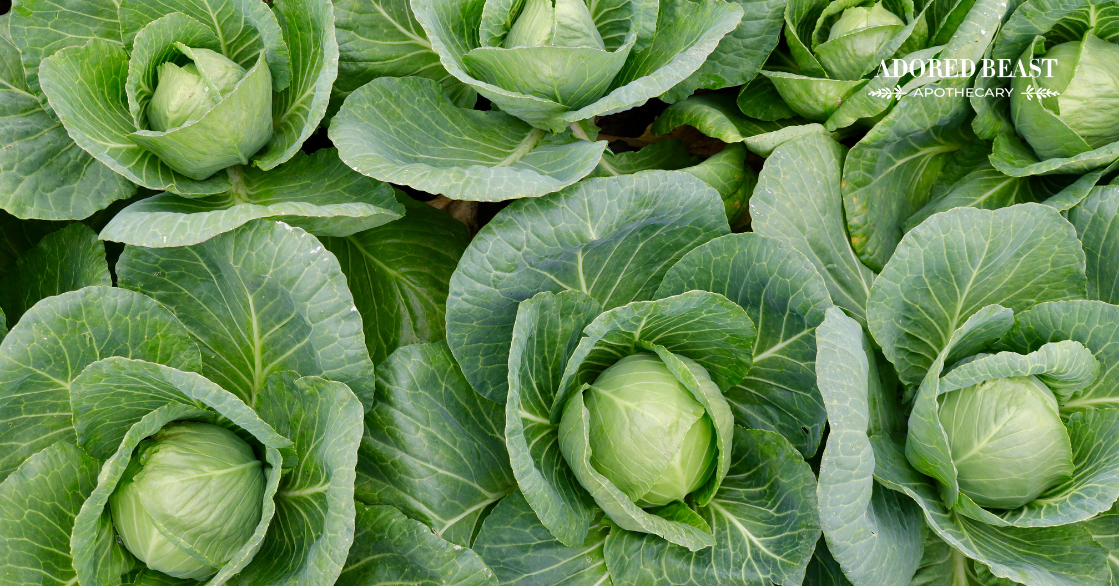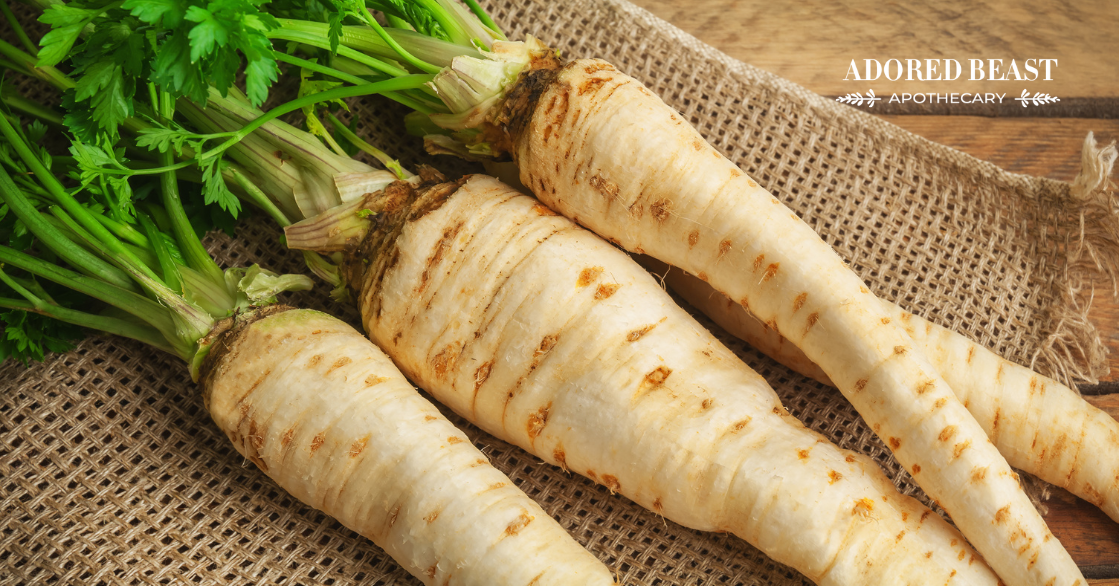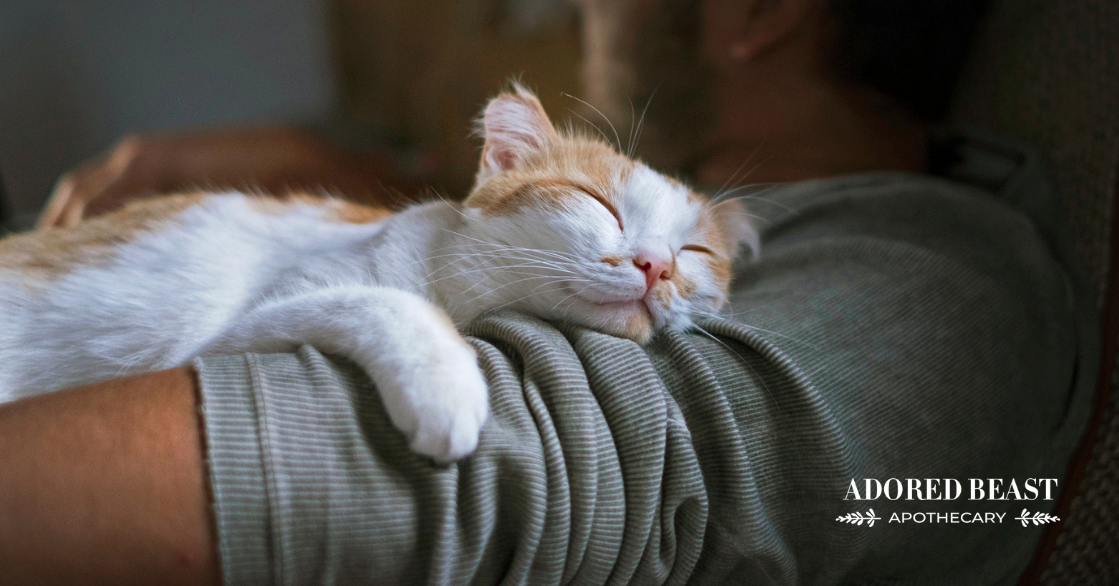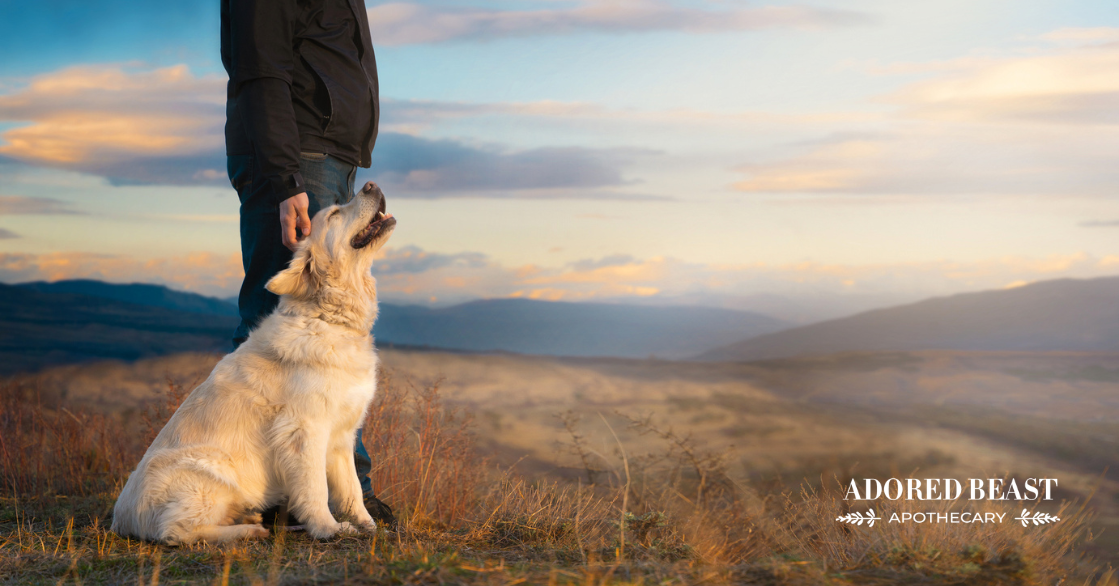Did you know there’s a National Cabbage Day? It’s true. Let’s be honest, there seems to be a day for just about everything – just Google those silly day calendars and you’ll see what I’m talking about.
But as silly as these days might be, whenever I see them I wonder how many people think “can dogs eat cabbage.” It’s a good reminder that there are so many different foods out there that can offer our pets value in the bowl.
Is cabbage one of those valuable food items? When you’re next making cabbage rolls or whipping up a nice coleslaw, should you share some of the green stuff with your dog?
Can Dogs Eat Cabbage?
Yes! Cabbage is one of the many vegetables that can be added to your animal’s bowl! This crunchy, cruciferous vegetable is in the same family as broccoli and cauliflower. And like its cousins, it’s a low-calorie snack!
It is packed with lots of benefits between those leaves:
- vitamins K, C, B6, B1
- fibre
- manganese
- copper
- potassium
- beta-carotene
And best of all, its polyphenols make it the cruciferous vegetable with the most antioxidants! That means it can help fight harmful free radicals that attack the body’s cells.
Thanks to the high fibre content, cabbage can help aid digestion. It supports a healthy gastrointestinal system. That said, it can make your dog a bit, well, gassy. So keep an eye on that, and reduce the amount you’re feeding if that seems to occur.
Can dogs eat cabbage of all kinds? Yes – savoy, red, napa, green… they’re all good! Out of all of them, the red is thought to be most nutritious, while the green has the highest water content.
How to Feed Your Dog Cabbage
Can dogs eat cabbage raw? Yep, raw cabbage is fine. Cooking is also good. Gently boiling or even roasting it (no seasoning please) can help make it easier for your dog to digest. Since cabbage leaves can be really dense, you want to chop it up small. Pulsing it in a food processor is also a good choice.
Note that cabbage contains thiocyanate, a chemical compound that affects the thyroid gland. If your dog has too much cabbage, there’s a risk of developing hypothyroidism. And although your dog would have eat a lot of raw cabbage over multiple days in order for this to happen, a small amount occasionally is the best approach. And this goes for all cruciferous vegetables – consider them all as one, so don’t overfeed them. Also, cooking the cabbage helps deactivate the effects of thiocyanate, so a quick boil will reduce any harm.
Additionally, be careful with large breed dogs that are prone to gastric torsion. If they get too many gassy vegetables there can be a concern with bloat. Less is more with large, deep-chested dogs and a rotation of all different vegetables is best.
And remember, dogs are carnivores, so while we love to add vegetables for the added vitamins, minerals, fibre, and phytonutrients, you want to make sure they don’t make up more than 25% of their diet. A spoonful on top of your dog’s regular meal every so often is a yummy, healthy snack.
Other Yes Veggies (& a Few Nos)
A number of other veggies can provide a wealth of nutrition too. Rotational feeding of fruit and vegetables is the best way to get a variety of nutrients into your dog. Try and get organic or pesticide free whenever you can.
Here’s the YES and NO lists for veg:
Yes Veggies:
- Swiss chard
- Wheat grass
- Microgreens
- Sprouts
- Dandelion leaf and root
- Mustard greens
- Arugula
- Parsley
- Cilantro
- Cucumber
- Spinach
- Broccoli
- Kale
- Beets
- Yam
- Winter squash
- Parsnip
- Jicama
- Carrot
Note: Many of you may have heard that carrots, beets, yams and other roots can be high is sugar but when fed in a raw/blended format, they actually contain beneficial fibres (similar to tree bark) that counter-act glucose uptake! Your dog doesn’t just eat sticks for fun. They instinctively eat sticks and bark for the fibre!
No Veggies:
- Onion
- Eggplant
- White potatoes
- Bell peppers
- Hot peppers
- Corn
- Lentils
Note: Adding grains and legumes to your pet’s diet increases the risk of harmful herbicide consumption (eg. Glyphosate AKA Round-Up). Legumes can also change the amino acid profile of the food which may be connected to diet-induced dilated cardiomyopathy in dogs.
We love to add fruits and vegetables to our dogs’ dinner. Changing things up with different offerings helps keep things fresh and exciting. And it helps ensure a wide variety of vitamins and minerals are making their way from that bowl to the body – and that’s always a good thing!












